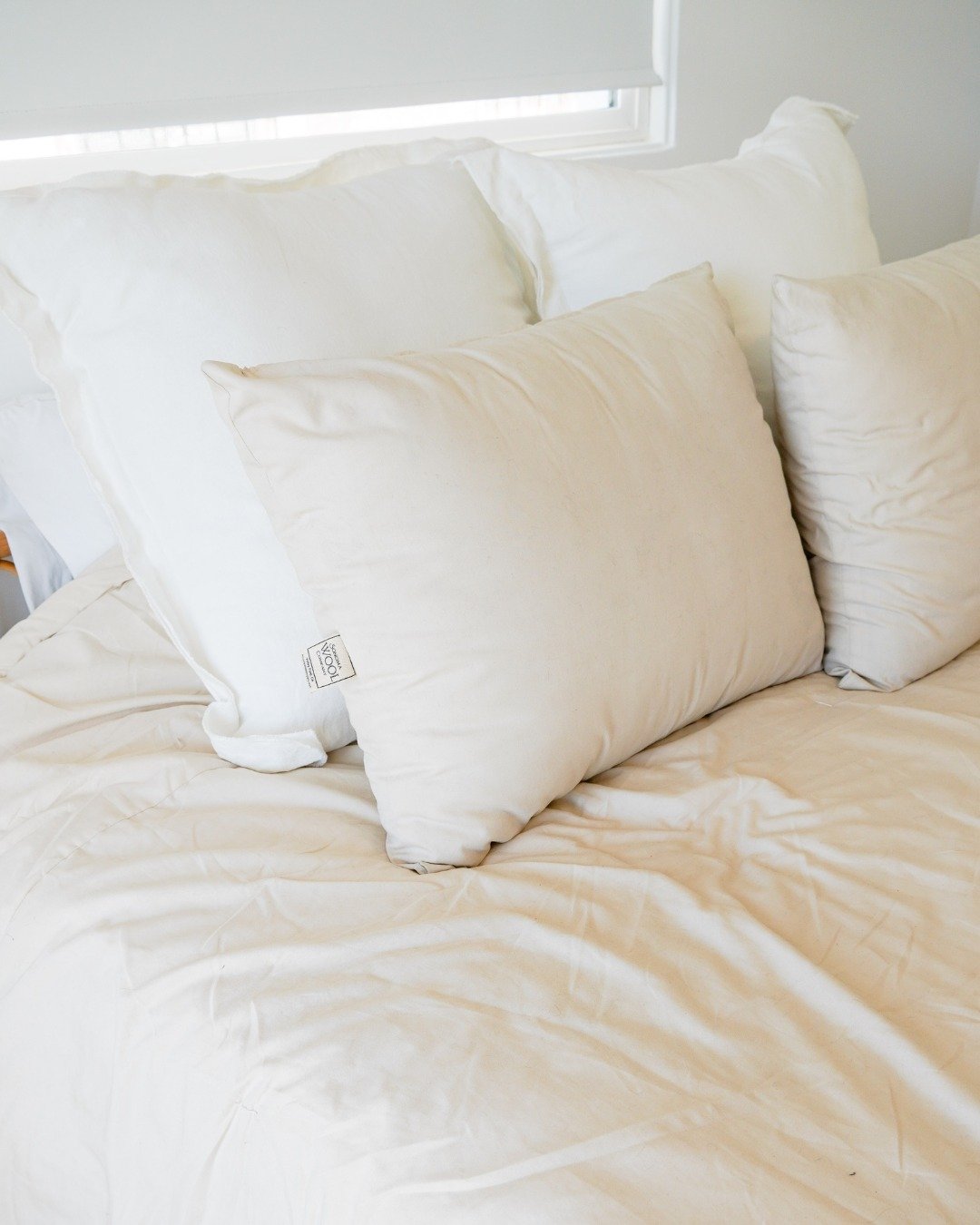Everyone tries to be eco-conscious these days, we’re all looking for ways to make greener choices. This extends to our homes, and the bed we spend a third of our lives in. You can find a lot of data on how bad synthetic materials are for the environment, and recent National Geographic article was highlighting the issue. While synthetic materials dominate the bedding market, wool bedding offers a surprisingly sustainable alternative. But wool’s benefits go beyond just a comfortable night’s sleep. Choosing wool bedding can be a significant step towards a more sustainable lifestyle.
When we talking about going more eco-friendly, a lot of people now understand that it’s not as much for consumers, but for big companies to make this shift. When we talk about wool industry, we also talk about sustainability, because at the core of this is farming. There are a differences between ethical and unethical farming, of course, but in the end of the day this all comes to producing sustainably.
Natural and Renewable:
Wool is a natural fiber shorn from sheep, making it a completely renewable resource. Unlike synthetic materials derived from fossil fuels, wool production doesn’t rely on non-renewable resources or contribute to greenhouse gas emissions. Sheep are sheared once or twice per year which is pretty fast renewing material. Additionally, unlike down and feathers, which are often harvested from birds with questionable practices, wool shearing is a necessary part of sheep health.
Biodegradable and Compostable:
At the end of its lifespan, wool bedding breaks down naturally. Unlike synthetic materials that clog landfills for centuries,wool biodegrades quickly, leaving behind no harmful microplastics or toxins. If you choose organic wool, you can even compost it, returning valuable nutrients back to the soil. This closed-loop system makes wool an attractive option for those seeking a truly eco-friendly bedding choice.
Durable and Long-Lasting:
Wool is a naturally resilient fiber. With proper care, wool bedding can last for years, even decades. This reduces the need for frequent replacements, which translates to less waste ending up in landfills. Our ancestors didn’t have fleece blankets and used wool, sometimes only having a few items thru their lifetime. If you’re going minimalist, you can read this statistics. Additionally, wool’s natural flame resistance eliminates the need for chemical fire retardants often found in synthetic bedding.
Sustainable Wool Production:
While wool production has its challenges, there’s a growing movement towards sustainable practices. Here are some key points to consider:
- Responsible Grazing: Managed grazing practices can improve soil health and biodiversity. Sheep can help control invasive plants and promote healthy grasslands.
- Animal Welfare: Choosing wool from farms with high animal welfare standards ensures the humane treatment of sheep. Look for certifications that promote responsible practices.
- Organic Wool: Organic wool production eliminates the use of harmful pesticides and herbicides, creating a healthier environment for sheep and the land.
Beyond the Basics: Lifecycle Assessment
Life Cycle Assessment (LCA) is a method used to assess the environmental impact of a product throughout its entire life cycle, from raw material extraction to production, use, and disposal. Studies comparing wool and synthetic bedding often reveal wool’s lower environmental footprint.
- Reduced Energy Consumption: Wool production typically requires less energy compared to synthetics, which are derived from petroleum and require intensive processing.
- Lower Water Usage: Wool production generally uses less water than synthetic fiber production.
- Minimized Waste Generation: As mentioned earlier, wool’s biodegradability reduces landfill waste compared to synthetic alternatives.
Choosing Sustainable Wool Bedding:
When purchasing wool bedding, here are some tips to ensure you’re making a truly green choice:
- Look for Certifications: Certifications like Global Organic Textile Standard (GOTS) or Responsible Wool Standard (RWS) guarantee ethical production practices and organic materials.
- Support Local Sheep Farmers: Buying wool bedding from local farms reduces transportation emissions and strengthens your community’s sustainable agriculture.
- Invest in Quality: Durable, high-quality wool bedding will last for years, minimizing waste and replacement needs.
The Bottom Line:
Choosing wool bedding is an investment in your sleep and the environment. Wool can last for many many years, so when you calculate the cost per night and then compare comfort of wool with synthetics, you will understand the difference. Many of us still can have baby blankets made out of wool and we can keep them for our lifetimes!
Wool provides a naturally comfortable, breathable, and temperature-regulating sleep experience while offering a significantly lower environmental impact compared to synthetic alternatives. By supporting sustainable wool production practices, you can contribute to a healthier planet for generations to come.
Beyond the Blog:
This blog is just the beginning of your sustainable sleep journey. Here are some additional steps you can take:
- Research Wool Certifications: Learn more about GOTS, RWS, and other certifications to make informed purchasing decisions.
- Connect with Local Wool Producers: Find local sheep farms that sell wool bedding or wool products.
- Spread the Word: Share your knowledge about the benefits of wool bedding with your friends and family,encouraging them to make eco-friendly choices.
By making informed decisions and supporting sustainable practices, we can create a greener future for ourselves and the planet, one comfortable night’s sleep at a time.





Leave a Reply